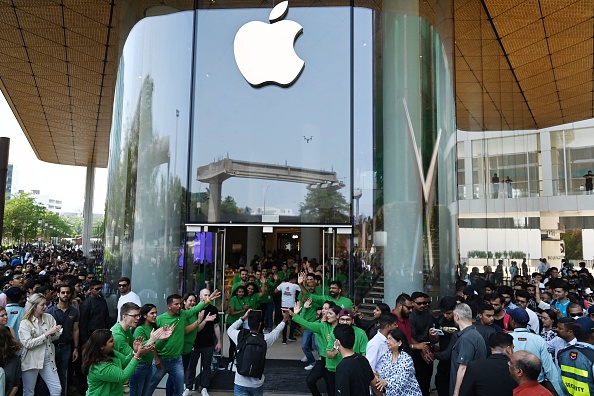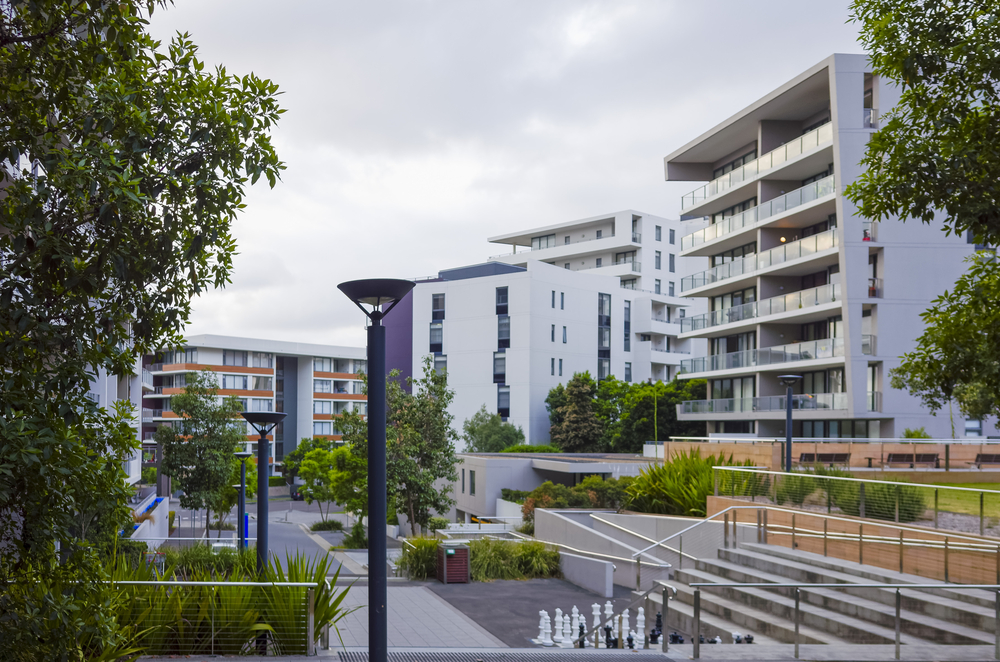Apple Opens First Retail Store in India as It Looks to Country for Manufacturing
The iPhone maker aims to diversify supply chain and boost sales in a country where it has struggled to gain traction
Apple Inc. opened its first retail store in India Tuesday, with Chief Executive Tim Cook celebrating the launch in person, as the company ramps up efforts to diversify its supply chain and boost smartphone sales in the world’s most populous country.
The tech company opened a bricks-and-mortar location in Mumbai, a financial hub in India, and said it is planning to open a second location Thursday in New Delhi, India’s capital.
Mr. Cook said earlier this year that he was focused on India, where Apple has been using financing options and trade-ins to make its products more affordable compared with cheaper alternatives from China.
“India is [a] hugely exciting market for us and is a major focus,” he said on Apple’s earnings call in February.
Fuelling Apple’s push into India is an ambitious project to diversify more of its supply chain away from China. For more than 20 years, Apple’s primary base of manufacturing has been China. But recent turmoil in its China operations has propelled Apple to more aggressively move operations to other countries, such as Vietnam and India, The Wall Street Journal reported.
Outside of China, India is viewed by Apple as the main candidate for producing the iPhone, the company’s most important product that still accounts for roughly half of its sales. India currently accounts for less than 10% of global iPhone production, mostly for selling into the domestic market. Apple’s longer-term goal is to produce 40% to 45% of its iPhones from India, according to Ming-chi Kuo, an analyst at TF International Securities who follows the supply chain.
Apple has encountered problems of building up iPhone manufacturing in India, the Journal previously reported. India doesn’t have the same level top-down governmental coordination that is found in China, which has previously helped clear the way for Apple to build up operations to the scale it needs in the country.
Apple’s main manufacturing partner, Foxconn Technology Group, is also considering a major expansion into India, including expanding iPhone production in an existing plant near Chennai, in the southern Indian state of Tamil Nadu, the Journal reported last month.
Apple has struggled to gain traction in India, where the company previously had mostly been selling its products online or through resellers and retail chains.
India is the world’s second-biggest smartphone market, both in terms of annual shipments and sales, according to market intelligence firm IDC. It accounts for almost 12% of the global market.
The retail stores are among Apple’s first steps to try to increase its sales in India. Apple is projected to have a 5% share of the country’s overall smartphone market this year, up from 1% in 2019, according to Counterpoint Research.
The multi storey Mumbai shop is in a bustling commercial area. Apple said the store will use solar panels and renewable energy. It is expected to be one of the company’s most energy-efficient locations. The company has more than 520 stores worldwide, according to its website.
Mr. Cook tweeted a picture of himself outside the Mumbai store on Tuesday, saying, “The energy, creativity, and passion in Mumbai is incredible!”
 Copyright 2020, Dow Jones & Company, Inc. All Rights Reserved Worldwide. LEARN MORE
Copyright 2020, Dow Jones & Company, Inc. All Rights Reserved Worldwide. LEARN MORE
This stylish family home combines a classic palette and finishes with a flexible floorplan
Just 55 minutes from Sydney, make this your creative getaway located in the majestic Hawkesbury region.
Impact investing is becoming more mainstream as larger, institutional asset owners drive more money into the sector, according to the nonprofit Global Impact Investing Network in New York.
In the GIIN’s State of the Market 2024 report, published late last month, researchers found that assets allocated to impact-investing strategies by repeat survey responders grew by a compound annual growth rate (CAGR) of 14% over the last five years.
These 71 responders to both the 2019 and 2024 surveys saw their total impact assets under management grow to US$249 billion this year from US$129 billion five years ago.
Medium- and large-size investors were largely responsible for the strong impact returns: Medium-size investors posted a median CAGR of 11% a year over the five-year period, and large-size investors posted a median CAGR of 14% a year.
Interestingly, the CAGR of assets held by small investors dropped by a median of 14% a year.
“When we drill down behind the compound annual growth of the assets that are being allocated to impact investing, it’s largely those larger investors that are actually driving it,” says Dean Hand, the GIIN’s chief research officer.
Overall, the GIIN surveyed 305 investors with a combined US$490 billion under management from 39 countries. Nearly three-quarters of the responders were investment managers, while 10% were foundations, and 3% were family offices. Development finance institutions, institutional asset owners, and companies represented most of the rest.
The majority of impact strategies are executed through private-equity, but public debt and equity have been the fastest-growing asset classes over the past five years, the report said. Public debt is growing at a CAGR of 32%, and public equity is growing at a CAGR of 19%. That compares to a CAGR of 17% for private equity and 7% for private debt.
According to the GIIN, the rise in public impact assets is being driven by larger investors, likely institutions.
Private equity has traditionally served as an ideal way to execute impact strategies, as it allows investors to select vehicles specifically designed to create a positive social or environmental impact by, for example, providing loans to smallholder farmers in Africa or by supporting fledging renewable energy technologies.
Future Returns: Preqin expects managers to rely on family offices, private banks, and individual investors for growth in the next six years
But today, institutional investors are looking across their portfolios—encompassing both private and public assets—to achieve their impact goals.
“Institutional asset owners are saying, ‘In the interests of our ultimate beneficiaries, we probably need to start driving these strategies across our assets,’” Hand says. Instead of carving out a dedicated impact strategy, these investors are taking “a holistic portfolio approach.”
An institutional manager may want to address issues such as climate change, healthcare costs, and local economic growth so it can support a better quality of life for its beneficiaries.
To achieve these goals, the manager could invest across a range of private debt, private equity, and real estate.
But the public markets offer opportunities, too. Using public debt, a manager could, for example, invest in green bonds, regional bank bonds, or healthcare social bonds. In public equity, it could invest in green-power storage technologies, minority-focused real-estate trusts, and in pharmaceutical and medical-care company stocks with the aim of influencing them to lower the costs of care, according to an example the GIIN lays out in a separate report on institutional strategies.
Influencing companies to act in the best interests of society and the environment is increasingly being done through such shareholder advocacy, either directly through ownership in individual stocks or through fund vehicles.
“They’re trying to move their portfolio companies to actually solving some of the challenges that exist,” Hand says.
Although the rate of growth in public strategies for impact is brisk, among survey respondents investments in public debt totaled only 12% of assets and just 7% in public equity. Private equity, however, grabs 43% of these investors’ assets.
Within private equity, Hand also discerns more evidence of maturity in the impact sector. That’s because more impact-oriented asset owners invest in mature and growth-stage companies, which are favored by larger asset owners that have more substantial assets to put to work.
The GIIN State of the Market report also found that impact asset owners are largely happy with both the financial performance and impact results of their holdings.
About three-quarters of those surveyed were seeking risk-adjusted, market-rate returns, although foundations were an exception as 68% sought below-market returns, the report said. Overall, 86% reported their investments were performing in line or above their expectations—even when their targets were not met—and 90% said the same for their impact returns.
Private-equity posted the strongest results, returning 17% on average, although that was less than the 19% targeted return. By contrast, public equity returned 11%, above a 10% target.
The fact some asset classes over performed and others underperformed, shows that “normal economic forces are at play in the market,” Hand says.
Although investors are satisfied with their impact performance, they are still dealing with a fragmented approach for measuring it, the report said. “Despite this, over two-thirds of investors are incorporating impact criteria into their investment governance documents, signalling a significant shift toward formalising impact considerations in decision-making processes,” it said.
Also, more investors are getting third-party verification of their results, which strengthens their accountability in the market.
“The satisfaction with performance is nice to see,” Hand says. “But we do need to see more about what’s happening in terms of investors being able to actually track both the impact performance in real terms as well as the financial performance in real terms.”
This stylish family home combines a classic palette and finishes with a flexible floorplan
Just 55 minutes from Sydney, make this your creative getaway located in the majestic Hawkesbury region.






















